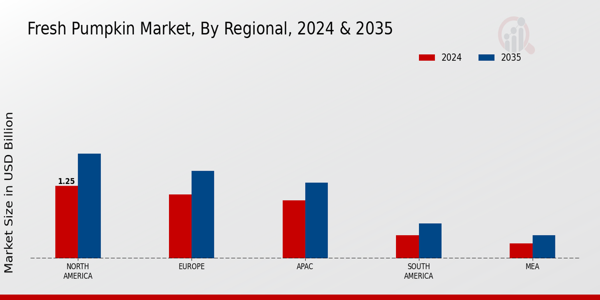Seasonal Demand Fluctuations
Seasonal demand plays a crucial role in shaping the dynamics of the Fresh Pumpkin Market. Traditionally, the peak season for fresh pumpkins coincides with the fall months, particularly around Halloween and Thanksgiving. During this period, demand can increase significantly, with sales reportedly rising by over 30 percent compared to off-peak months. This seasonal spike is driven by cultural traditions and festivities that prominently feature pumpkins, such as pumpkin carving and pie making. Retailers and producers often prepare for this surge by ramping up production and marketing efforts in advance. However, the challenge lies in managing supply to meet this fluctuating demand, as any miscalculation could lead to either surplus or shortages, impacting profitability. Thus, understanding and anticipating seasonal trends is essential for stakeholders in the Fresh Pumpkin Market.
Health Benefits of Fresh Pumpkins
The rising awareness of health benefits associated with fresh pumpkins appears to be a pivotal driver in the Fresh Pumpkin Market. Rich in vitamins, minerals, and antioxidants, pumpkins are increasingly recognized for their nutritional value. They are low in calories and high in fiber, which may contribute to weight management and digestive health. According to recent data, the consumption of pumpkins has surged by approximately 20 percent over the past five years, reflecting a growing trend towards healthier eating habits. This shift is likely to bolster demand for fresh pumpkins, as consumers seek natural and nutritious food options. Furthermore, the versatility of pumpkins in various culinary applications, from soups to desserts, enhances their appeal, potentially leading to increased market penetration in the health-conscious demographic.
Product Innovation and Diversification
Innovation within the Fresh Pumpkin Market is increasingly becoming a key driver of growth. Producers are exploring new varieties of pumpkins, such as specialty and heirloom types, which cater to niche markets and gourmet consumers. Additionally, the introduction of value-added products, such as pre-cut pumpkins and organic options, appears to enhance consumer convenience and appeal. Market data indicates that the segment for organic pumpkins has expanded by approximately 15 percent in recent years, reflecting a shift towards sustainable and organic farming practices. This trend not only meets consumer demand for quality but also aligns with broader environmental concerns. As producers continue to innovate and diversify their offerings, the Fresh Pumpkin Market is likely to experience sustained growth and increased consumer interest.
Culinary Trends and Consumer Preferences
The evolving culinary landscape significantly influences the Fresh Pumpkin Market. As consumers become more adventurous in their cooking, there is a growing interest in incorporating fresh pumpkins into a variety of dishes beyond traditional uses. This trend is evidenced by the increasing popularity of pumpkin-based recipes in cookbooks and online platforms, which may drive demand for fresh pumpkins. Furthermore, the rise of plant-based diets and the emphasis on seasonal eating suggest that fresh pumpkins are well-positioned to capture the interest of health-conscious consumers. Market Research Future indicates that the use of pumpkins in smoothies, salads, and even as a meat substitute is gaining traction. This shift in consumer preferences could lead to a broader acceptance and utilization of fresh pumpkins, thereby expanding their market presence.
Sustainability and Environmental Awareness
Sustainability concerns are becoming increasingly relevant in the Fresh Pumpkin Market. As consumers grow more environmentally conscious, there is a noticeable shift towards sourcing locally grown pumpkins and supporting sustainable farming practices. This trend is reflected in the rising demand for organic and sustainably produced pumpkins, which has reportedly increased by 10 percent in recent years. Consumers are more inclined to choose products that align with their values regarding environmental stewardship and ethical sourcing. Additionally, initiatives aimed at reducing food waste, such as utilizing pumpkin seeds and pulp, are gaining popularity. This focus on sustainability not only enhances the appeal of fresh pumpkins but also encourages producers to adopt eco-friendly practices. As awareness of environmental issues continues to rise, the Fresh Pumpkin Market may see a further shift towards sustainable consumption patterns.


















Leave a Comment